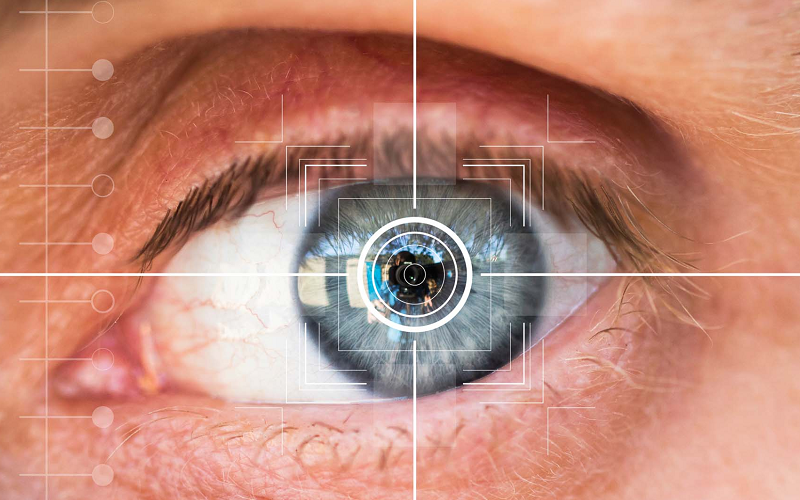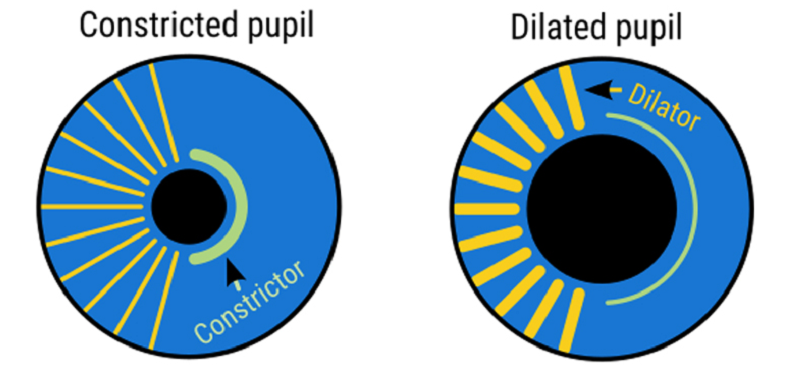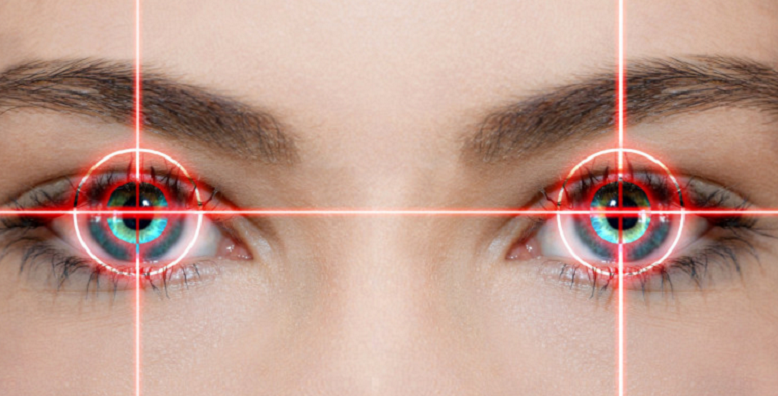
Have you ever noticed your pupils widening when you’re engrossed in a challenging mental task or during a moment of intense focus? It turns out that your eyes may be the window not just to your soul, but to your cognitive processes as well. Here we examine the fascinating relationship between pupil dilation — a seemingly simple and involuntary eye function — and cognitive overload, a state of mental fatigue that many of us experience but often fail to recognize. This often-overlooked correlation offers significant insights into brain health, revealing much more than meets the eye.
Contents
Background Information on the Eye and Cognition
Before we go deep into the intricacies of how pupil dilation is related to cognitive overload, it’s important to lay down some foundational knowledge.
Anatomy of the Eye
Description of Pupil
The pupil is the black circle at the center of the eye, surrounded by the colorful iris. This hole allows light to enter the eye, eventually reaching the retina at the back where the light is converted into neural signals for the brain to interpret.
Function of Iris
The iris, the colorful part of your eye, is a muscle that controls the size of the pupil. When it contracts or expands, it regulates the amount of light that enters the eye, adapting to different lighting conditions. Now that you have a basic understanding of the relevant eye anatomy, let’s move on to cognitive functions and how they operate.
Basic Cognitive Functions
Memory
Memory is not just one single entity; it’s a complex system that involves different types of memories like short-term, long-term, and sensory memory. These different aspects work together to help you navigate through life, learn new information, and make decisions.
Attention
Attention refers to your ability to selectively focus on particular stimuli or activities while ignoring others. It’s a critical function for tasks that require concentrated mental effort [1].
Problem-Solving
Problem-solving is another crucial cognitive function. It involves using your mental faculties to find solutions to complex issues. This could range from simple tasks like figuring out the fastest route to your destination, to more complex problems like mathematical calculations.
With these cognitive functions in mind, let’s examine what happens when they are pushed to the limit, a state commonly referred to as cognitive overload.
What is Cognitive Overload?
Definition
Cognitive overload occurs when the volume or complexity of information coming into our cognitive system exceeds our ability to handle it. It’s like trying to pour a gallon of water into a pint-sized cup; eventually, things are going to spill over.
Symptoms and Signs
Signs of cognitive overload can include feelings of stress, confusion, or even a complete shutdown where you feel incapable of processing any more information. This can occur in various scenarios such as during intense studying, multitasking at work, or even navigating through a crowded and noisy environment.
Previous Research on Pupil Dilation and Cognitive Load
Researchers have long been interested in the physiological markers of cognitive load, and pupil dilation has emerged as a particularly promising area of study. Scientific studies have shown a clear correlation between the size of the pupil and the level of cognitive effort required to perform a task. For example, when you’re trying to solve a complicated math problem, your pupils are likely to dilate, indicating a higher cognitive load [2].

Pupil Dilation as an Indicator of Cognitive States
Now that we have a solid grasp of the basics of eye anatomy and cognitive function, let’s delve into the core subject of our discussion: the role of pupil dilation as an indicator of various psychological and cognitive states. We’ll explore this through the lenses of involuntary responses, cognitive responses, and the medical and psychological applications that are currently being implemented.
Involuntary Response
Your pupils dilate for various reasons that are often out of your control, responding to emotional states and changes in lighting conditions. Understanding these involuntary responses can help us distinguish when pupil dilation is specifically related to cognitive load.
Emotional States
It’s a well-documented fact that your pupils can dilate when you experience strong emotions like fear, excitement, or even love. This is an automatic response by your nervous system to prepare you for whatever situation you might find yourself in. Emotional arousal and pupil dilation are interconnected, but they form only part of the story.
Light Changes
The most straightforward reason for pupil dilation is the adjustment to differing light levels. When you move from a well-lit room into a darker space, your pupils enlarge to allow more light to hit the retina, improving your vision in low-light conditions. While this is a primary function of pupil dilation, it’s crucial to separate these instances from those related to cognitive load to get a clear picture of what’s happening in the brain.
Cognitive Response
In contrast to involuntary dilation, pupils also respond directly to cognitive processes. When you’re engrossed in a challenging task or thinking deeply about a complex issue, your pupils can enlarge as a marker of this mental exertion.
Mental Workload
Your pupils aren’t just passive windows to your soul; they’re active indicators of your mental workload. When you’re engaged in mentally demanding tasks—be it solving a tricky puzzle or making a high-stakes decision—your pupils tend to dilate. This dilation is a physiological signal that your brain is working hard [3].
Task Complexity
Interestingly, the extent of pupil dilation can also be proportional to the complexity of the task at hand. Simple tasks might lead to minor dilation, while complex, multi-step problems could result in more noticeable changes. This presents a fascinating opportunity to measure cognitive load in real-time, simply by observing the eyes.
Medical and Psychological Uses
Pupil dilation isn’t just a topic of casual interest; it has substantial applications in medical and psychological fields, informing diagnoses and research methodologies.
Diagnosis of Neurological Conditions
Monitoring pupil dilation can be invaluable in diagnosing certain neurological conditions. For example, irregular pupil dilation can sometimes indicate issues with the autonomic nervous system, helping healthcare providers pinpoint the nature of a patient’s condition.
Psychological Experiments
Pupil dilation has also been used as a measure in various psychological experiments to gauge participants’ reactions to stimuli. This includes studies focused on memory retention, decision-making, and emotional response. Pupil dilation serves as a reliable metric for researchers to interpret their data.
Lie Detection
While not as reliable as other methods, pupil dilation has even been studied for its potential application in lie detection. The theory is that lying increases cognitive load, which in turn could cause pupils to dilate. However, more research is needed to substantiate this claim definitively [4].

The Pupil’s Connection with Cognitive Overload
Having explored the various facets of pupil dilation, it’s time to connect the dots and look into the specific relationship between pupil dilation and cognitive overload. This is where the body-brain connection becomes particularly illuminating.
Measuring Cognitive Load Through Pupil Dilation
The fact that our pupils can dilate in response to cognitive effort presents an exciting opportunity to quantify mental workload in a non-intrusive way. Let’s explore this groundbreaking methodology and some of its real-world applications.
Research Studies
Various studies have established a link between pupil dilation and cognitive load. Researchers often use eye-tracking devices to monitor changes in pupil size while participants engage in tasks of varying complexity. These studies have confirmed that as cognitive workload increases, so does pupil dilation, providing an empirical way to measure mental effort.
Real-world Applications
The research is not just theoretical; it has practical applications too. For example, some modern vehicles are equipped with driver-monitoring systems that include eye-tracking technology. These systems can assess cognitive overload and alert the driver, thereby reducing the risk of accidents. Another application is in education, where teachers and instructional designers could potentially adapt material in real-time based on the cognitive load experienced by students, as indicated by pupil dilation.
Why it Matters
Understanding the link between pupil dilation and cognitive overload isn’t merely academic; it has real-world implications that could affect multiple domains of our lives.
Early Detection of Cognitive Issues
The ability to quantify cognitive load through pupil dilation may offer a non-intrusive way to detect cognitive impairments or monitor neurological conditions. Early detection could lead to more effective interventions and better outcomes for individuals [5].
Improving Work and Learning Environments
By measuring cognitive load, organizations and educational institutions could optimize environments for maximum cognitive efficiency. For instance, jobs could be designed to balance mental workload better, and educational curricula could be adapted to match students’ cognitive capacities, thereby enhancing productivity and learning outcomes.
Limitations and Considerations
While the relationship between pupil dilation and cognitive load is promising, there are some limitations and considerations that must be taken into account.
Individual Differences
Not everyone’s pupils react in the same way under cognitive load. Factors such as age, existing medical conditions, and even genetic differences can impact how a person’s pupils dilate in response to cognitive demands. These variables need to be considered when interpreting the data.
Other Influencing Factors
Moreover, cognitive load isn’t the only factor that can cause pupil dilation. As discussed earlier, emotional states and lighting conditions can also impact pupil size. Thus, these variables must be controlled for or considered when assessing cognitive load through pupil dilation.
References
[1] Pupil Diameter as a Measure of Cognitive Load
[2] Eye tracking cognitive load using pupil diameter
[3] Pupil Dilation as an Index of Learning
[4] Pupil dilation as an index of effort in cognitive control tasks
[5] Pupillary Responses for Cognitive Load Measurement
